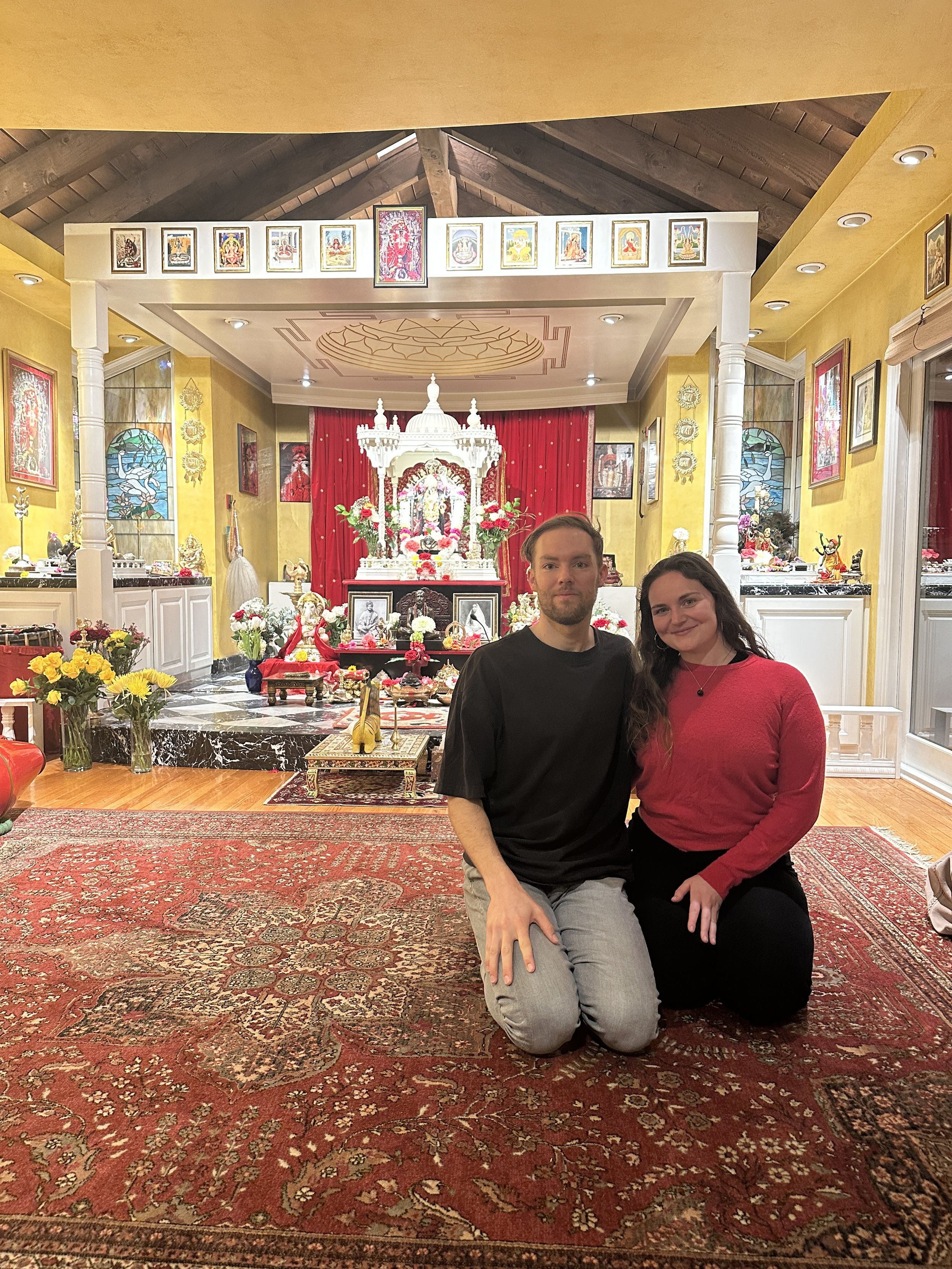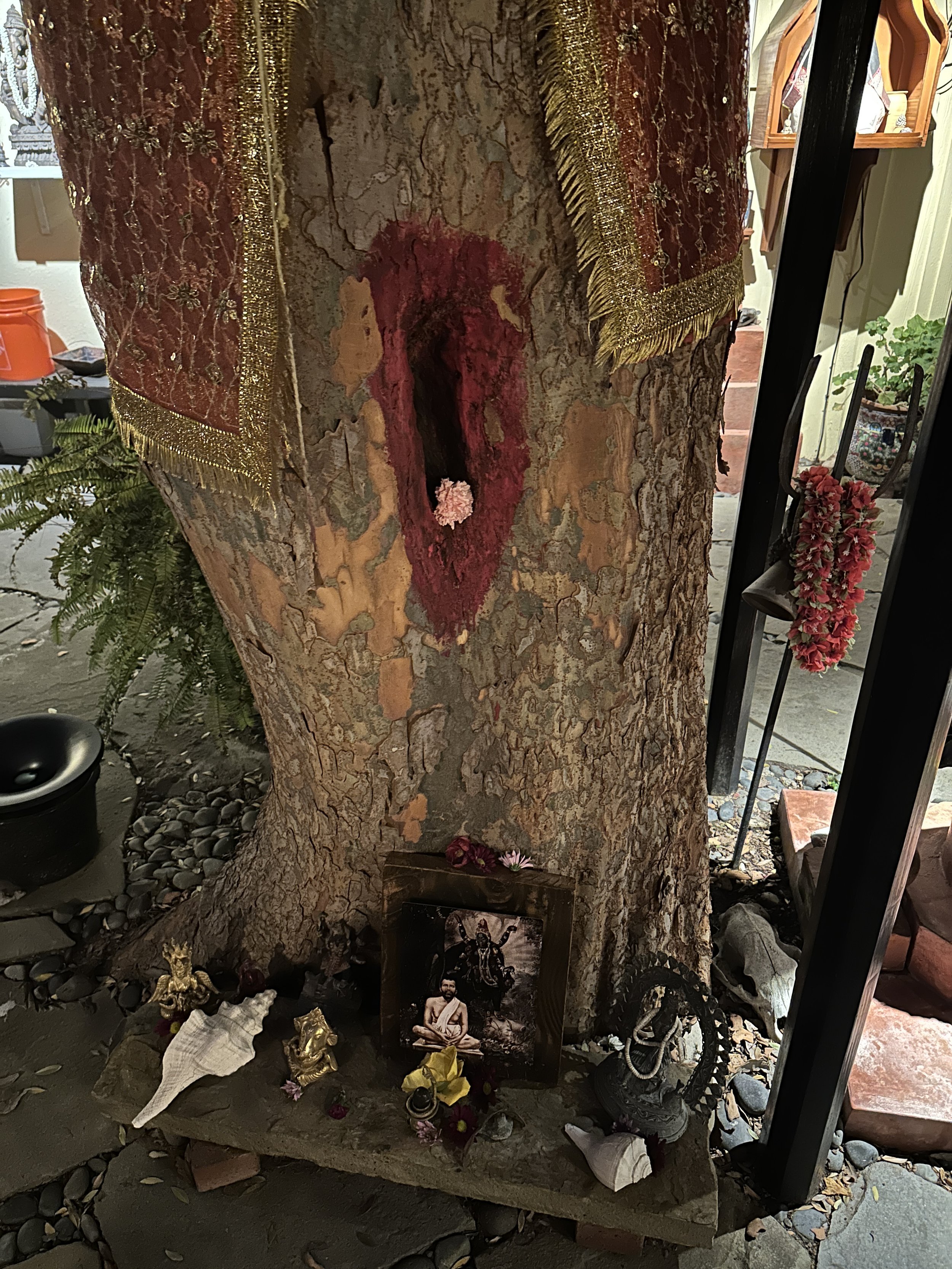This week, I turned 35.
I suppose this is around the time I could expect myself to start evolving into my spiritual puberty—a time of deeper transformation, shedding old layers, and stepping more fully into the path. So perhaps it was no coincidence that this week became a double spiritual intensive, with back-to-back powerful experiences.
Still buzzing from the intensity of Shivaratri, another opportunity for celebration was presented to me. Katy, my girlfriend, suggested that we celebrate my birthday in Laguna Beach and visit Kali Mandir, a temple dedicated to Kali, the fierce and compassionate Hindu goddess of destruction and transformation.
Kali is often seen as the feminine counterpart to Shiva, both embodying destruction—not as an end, but as a necessary phase in the cycle of life. In the Hindu Trimurti, there are three primary cosmic functions: creation, maintenance, and destruction, each represented by a deity and their consort. Given the year we had—with the fire and losing our home—this pilgrimage felt like a way to honor the closing of one chapter and the beginning of another.
So we embarked on a two-hour road trip down the California coast.
Meet Katy
Perhaps this trip embodied the feminine expression of the energy—not just because we were visiting a goddess temple, but because I was accompanied by Katy, a woman whose spiritual depth continually inspires me.
Katy is, by all measures, a mystic. She sees visions in her meditations, travels to places beyond my reach, and has spent years studying under spiritual teachers around the world. She once lived freely on a retreat property in Hawaii, having profound awakenings before eventually returning east to pursue a Master’s degree in Spiritual Psychology form Columbia University.
A Day of Release and Renewal
Before heading to Kali Mandir, Katy surprised me with a Thai couples massage—a full-body reset after the demanding night of Shivaratri.
The treatment was intense.
A Thai massage isn't a typical relaxing spa experience—it’s deep, physical, and immersive. My massage therapist, a strong and precise practitioner, twisted and stretched my body into positions I didn’t know I could achieve. It was like being guided through an involuntary yoga practice. Katy’s massage therapist was small but mighty. We both left feeling like we had shed layers of tension, as if preparing ourselves for the energy of the temple.
Afterward, we stopped for lunch at a Vietnamese restaurant, where we had lemongrass soup—a dish Anthony Bourdain once called his favorite in Asia. The spicy, aromatic broth seemed fitting for the day—intense, purifying, and awakening.
A Visit to Kali Mandir
Finally, it was time to visit Kali Mandir.
Before arriving, we stopped at a local grocery store to pick up fresh flower offerings for the temple.
We entered through the back entrance, stepping into what felt less like a formal temple and more like a sacred home. The space, owned since the 1990s by a devoted woman, is cared for by a small group of tattooed swamis, who lead the worship and maintain the temple’s energy.
At the heart of the space is an incredible altar, adorned with pictures, sacred objects, and an abundance of fresh flowers. At its center sits a statue of Kali, the fierce yet motherly goddess.
Kali Mandir follows a tradition that worships Kali in her benevolent form—not as the bloodthirsty, fearsome destroyer often depicted in mythology, but as a loving force of transformation, liberation, and fierce compassion.
A Night of Kirtan and Celebration
Unlike the structured pujas (ritual ceremonies) often held at the temple, this evening was a kirtan—a night of devotional chanting and music.
The room erupted into sound—drums, bells, clapping hands, and voices rising in call-and-response chants. The air pulsed with energy, and I found myself completely immersed in the rhythm. What better way to step into a new year of life than through song and celebration?
Katy, the adept that she is, slipped effortlessly into deep meditation. She later told me that she had a powerful vision of Kali, her presence unmistakable. Her attention was particularly drawn to the yantra above the altar—a sacred geometric pattern used for meditation.
The Power of a Yantra
A yantra is a visual meditation tool, a mystical diagram that acts as a doorway to higher consciousness. These geometric patterns are designed to focus the mind and draw the practitioner into a state of deep awareness. Many believe that gazing at a yantra can take you on an inner pilgrimage, no plane ticket required.
For Katy, this night’s meditation was a journey.
For me, it was a reminder.
You don’t have to travel to India or seek distant lands to find transformation. The real pilgrimage is within.
Everything we seek—truth, wisdom, awakening—is already inside us, waiting to be discovered in the stillness of our own being.
And so, I closed my eyes, felt the energy of the room, and let the music carry me deeper into this new year of life.







